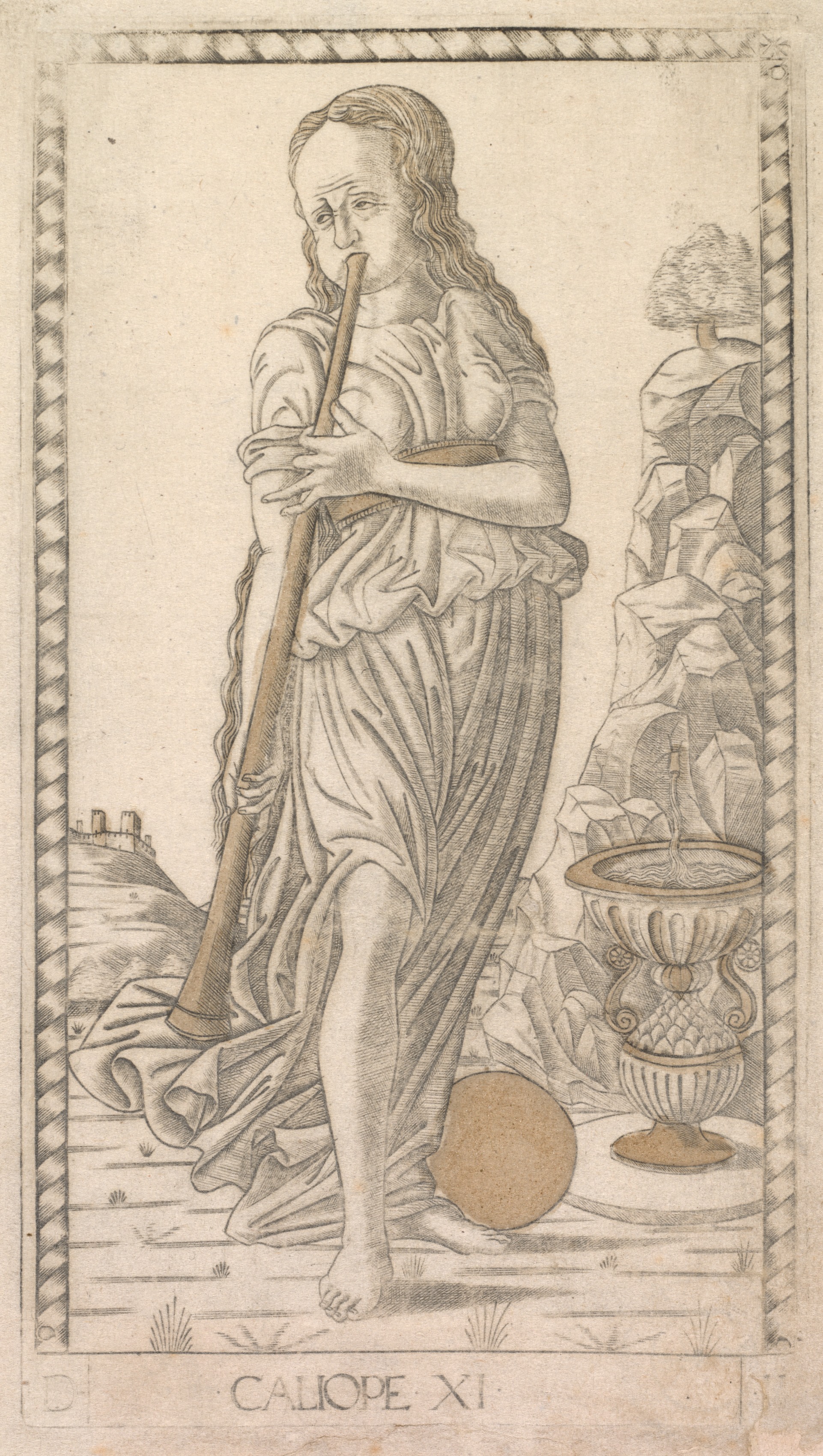The Cleveland Museum of Art
Collection Online as of April 23, 2024

Calliope (from the Tarocchi series D: Apollo and the Muses, #11)
before 1467
Location: not on view
Description
This engraving is part of the Tarocchi group marked with the letter “D,” and named Apollo and the Muses. In Greek mythology, the nine Muses (Calliope, Urania, Terpsichore, Erato, Polyhymnia, Thalia, Melpomene, Euterpe, and Clio) were the daughters of Zeus, king of the gods, and Mnemosyne, the Titaness of memory. The Muses were goddesses presiding over different branches of the arts and sciences. Their leader and supervisor was Apollo, the god of light, music, prophecy, and poetry.Here, Caliope (Calliope) is personified as a full-length female figure, playing a long horn. Next to her is a fountain. This symbolizes the Greek Castalian font at Mount Parnassus, sacred to the Muses and believed by poets to be a source of inspiration. Calliope was regarded as the foremost of the Muses and the one prompting epic poetry.
- Early Italian Engraving: 1460's - 1530's. The Cleveland Museum of Art, Cleveland, OH (organizer) (August 25-October 27, 2002).Cleveland, Ohio: The Cleveland Museum of Art; August 25-October 27, 2002. "Early Italian Engravings: 1460s - 1530s."CMA 1996: Sets and Series: Five Centuries of Master Prints, February 20-May 5, 1996, no cat.Old Master Prints and Drawings. The Cleveland Museum of Art, Cleveland, OH (organizer) (July 29, 1966-February 28, 1967).
- {{cite web|title=Calliope (from the Tarocchi series D: Apollo and the Muses, #11)|url=false|author=Master of the E-Series Tarocchi|year=before 1467|access-date=23 April 2024|publisher=Cleveland Museum of Art}}
Source URL:
https://www.clevelandart.org/art/1924.432.11